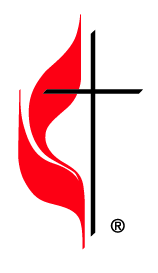Season of Creation - Life and Death in Creation

Week 2: September 8 - Life and Death in Creation
Jeremiah 18:1-11, Psalm 139:1-6, 13-18
Note to the Teacher
The key emphasis this week (for this lesson from Jeremiah 5 and Psalm 139) is: it was an act of love that God created humanity and without God there would be no living beings at all. The ice breaker invites youth to play a game of animal Pictionary. The discussion encourages students to reflect on God being the author of life and life sometimes being fragile and temporary. The activity allows youth to work in groups to create their own painting.
Times are based on a 50-minute lesson period, but can be adjusted.
Time Description of Activity
10 min. 1. Ice Breaker – What Animal Am I Drawing?
SUPPLIES: Small slips of paper to write down animal names, something to write with, a box to collect the sheets of paper, markers and a whiteboard or flipchart with large paper to draw on.
Since we are discussing creation this week we are going to think about all of the animals that God created. Give every student a small sheet of paper and instruct them to write down the name of one species of animal. Then collect all the pieces of paper in the box.
Invite one student to come forward to randomly pick a slip of paper and then give them one minute to try to draw the animal named while the class tries to guess what it is. Repeat as many times as time allows having a different student draw each time.
5 min. 2. Read Scripture
Our Scripture reading today will focus on Jeremiah 18:1-11 and Psalm 139:1-6, 13-18. Jeremiah 18 talks about God being the potter and the earth and things of earth the clay. Psalm 139 shares that God created each of us and knows our innermost beings.
Read Jeremiah 18:1-11
Read Psalm 139:1-6, 13-18
15 min. 3. Discussion
- Jeremiah 18 describes God as the potter. If God is the potter, what is the clay?
- Does God have the privilege to do anything God wants with the clay?
- What is God telling the people of Israel in verses 5-10?
- What does verse 11 say the people need to do?
- Sometimes we as humans like to think we deserve certain things and are in control. What do these verses remind us if God is truly the potter and we are the clay?
From Psalm 139
- Sometimes it can feel like God is far away or distant, but what does Psalm 139 say about how well God knows each and every one of us?
- In verse 13 it says “you created my innermost being.” What does that mean to you?
- Even though we may not always feel wonderful, verse 14 says we are “wonderfully made.” How does this verse challenge us to think about ourselves?
20 Min. 4. Activity and Discussion – You get to be the Creator
Bring this lesson an artistic flare by allowing students to get to be the creators of art just as God is the initial Creator. You can find this and all sorts of other lesson activities at the Youth Worker Collective (youthworkercollective.com).
Supplies: Watercolor painting sets for each group of students, including paint and small brushes, a piece of poster board or large sheet of butcher paper for each group.
Break the students up into groups with 4-5 students apiece and give them a set of watercolor paint and brushes and a large sheet of paper. Tell them they have 10 minutes to make a creation. Don’t give any other instructions about what to paint, this is intentional!
After 10 minutes pass, ask each group to briefly share and explain, if necessary, their creation to the rest of the group.
Now ask:
- What was it like being asked to create something without any instructions?
- What do you think it was like for God to create the entire world in the beginning?
- What does it say about God that amongst all the possibilities God chose to create humanity?
Close in the manner that is typical for you. Consider taking joys/concerns from the students, then asking for a volunteer to close in prayer.
50 min.
NEEDED RESOURCES:
- Small slips of paper and something to write with for each student.
- A whiteboard or large flipchart to draw on with markers.
- Set of watercolors and small paint brushes for each group of students (4-5 student per group)
- Large sheet of butcher paper or posterboard for each group.

